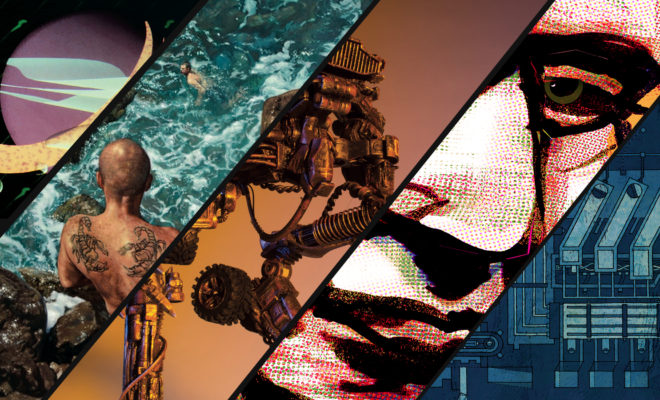
Feature
Designing the Future
Nine Ringling College Teachers
By Ryan G. Van Cleave | Opening Photo by Nancy Guth
What better way to investigate and appreciate the world of art and design than by seeing it for ourselves and hearing from those that create it? With that in mind, here are nine teachers from Ringling College of Art and Design sharing their work, their vision, and their ideas about the art they make.
Ken Spirduso
Background Design/Visual
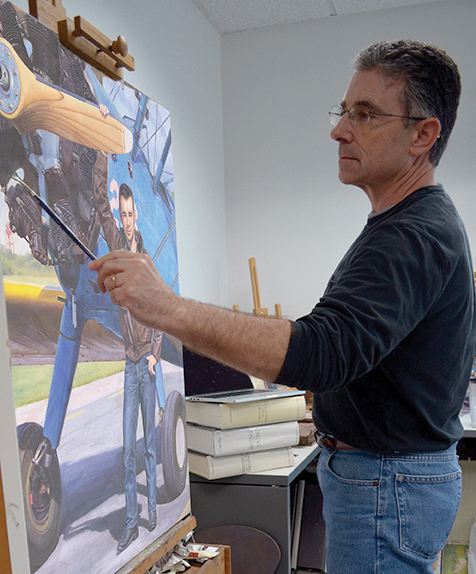
Bio: My background is in animation, concept illustration, and fine art. As a layout artist, I designed environments for films such as Thumbelina, The Lion King, Pocahontas, Tarzan, Mulan, and Lilo and Stitch, and painted backgrounds for films such as Brother Bear and Curious George. I’ve also created concepts and scenic art for theme parks, storyboarded and illustrated for video games and the military, and painted portraits and landscapes.
Vital early-career moment: Early in my career, my wife and I had an opportunity to live in Dublin for two years. I worked with animator Don Bluth, and Caroline studied with the British Horse Society—a wonderful opportunity for both of us. Working on films with Don Bluth and his studio opened the door for me to work with Disney Feature Animation in Orlando.
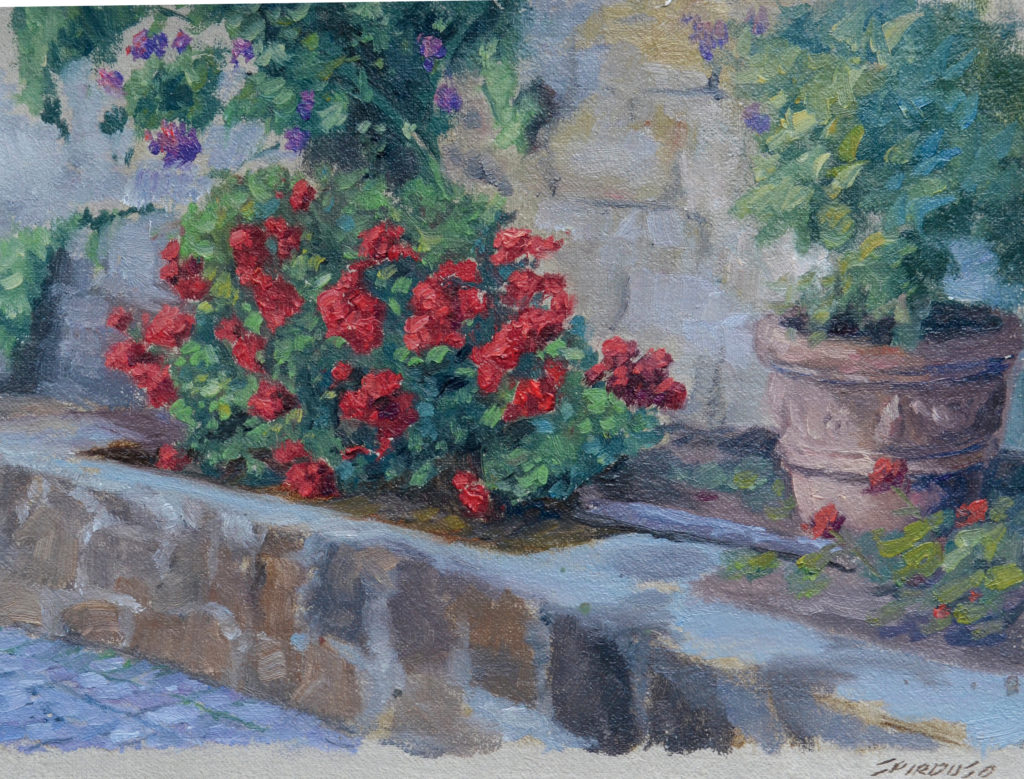
Your influences: My dad, who was a designer and photographer, taught me how to draw. I was blessed with excellent teachers such as Vern Olson, John Collier, Robert Sudlow, Steve Gjertson, Dale Redpath, and Richard Lack. While in school, my heroes included Rembrandt, Velazquez, Van Dyck, NC Wyeth, and Howard Pyle. Their work was an inspiration and an education and helped to equip me for future work in animation, concepts, and painting.
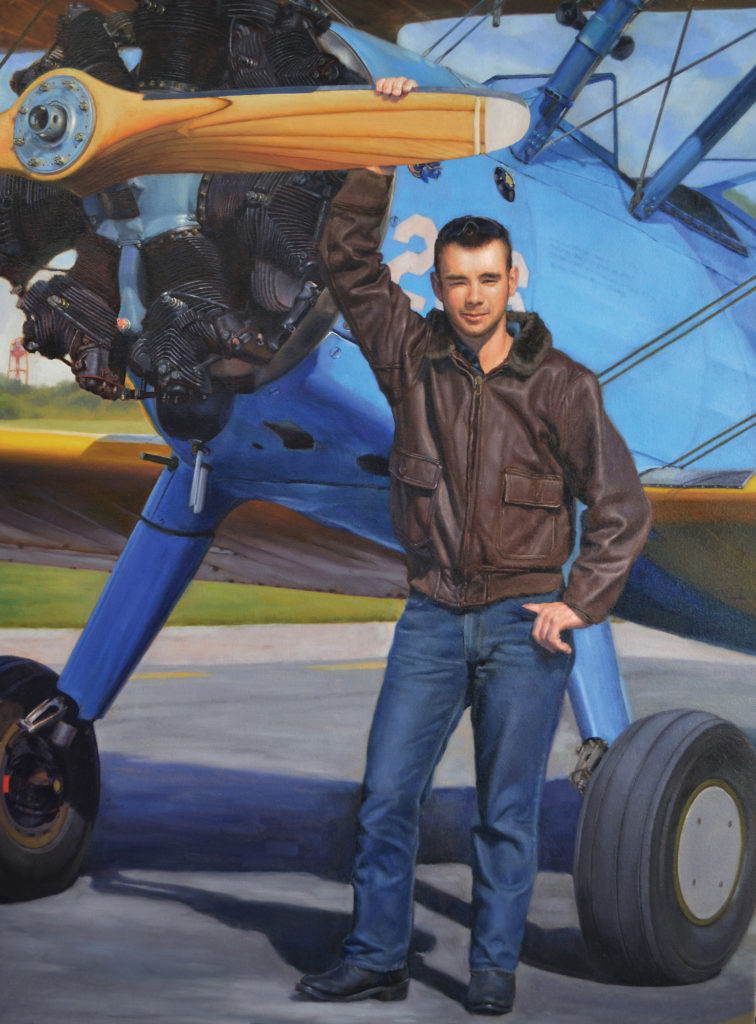
Key thing to know about background design: There’s a common misconception that artists who create backgrounds for animated movies or video games rely solely on their imaginations. In fact, they spend a great amount of time researching what’s real.
For example, an animation studio will send teams out to gather reference images from locations around the world. They photograph, sketch, and paint in order to bring back to the studio information on landscapes, architecture, lighting, and color. All of that information is then filtered through a chosen style that’s tailored to help tell a story.
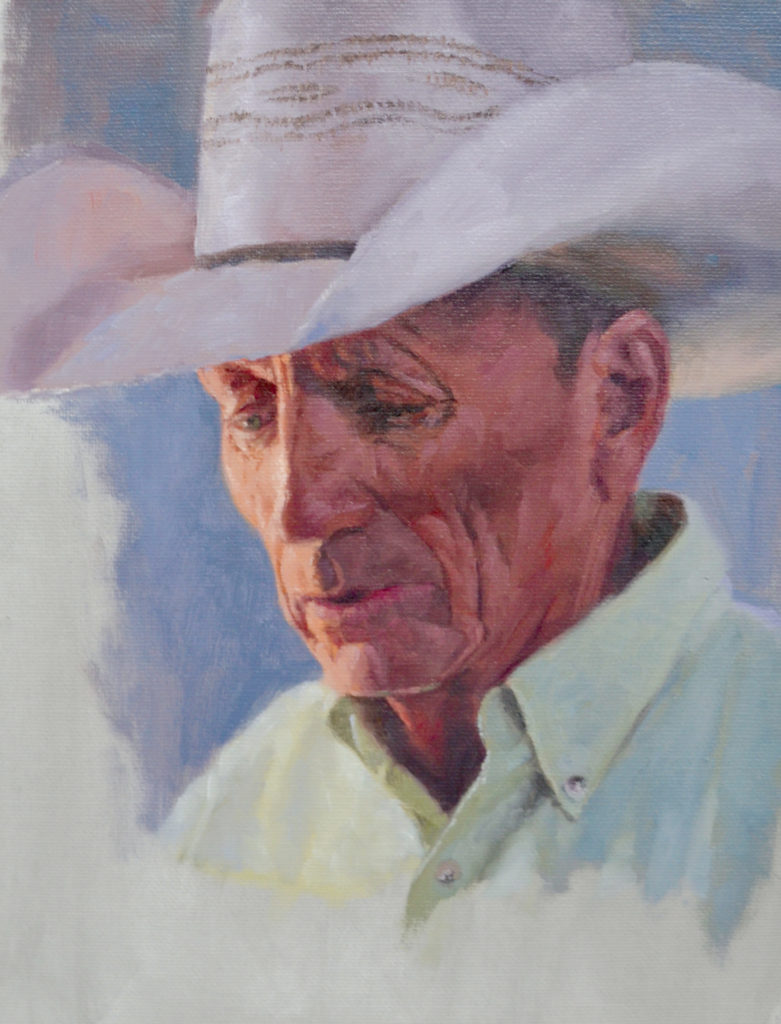
Something surprising about making art: When I began my career in animation, I was surprised to see how animation studios were influenced by great art of the past. They weren’t creating cartoons in a simple, visual style, but instead, they looked to the Renaissance, the Golden Age of Illustration, wildlife art and landscape painting to guide the artwork produced for animated films. The Disney animation studio in Orlando was like a graduate art program where we were constantly being trained in drawing and painting as well as art history.
Most important thing to understand about making art: Succeeding in art isn’t easy—it takes an entire career of study and practice. However, if artists draw and paint well and understand basic information such as tone relationships, color theory, and composition, they have a chance to succeed in the industry.
Jeff Bleitz
Graphic Design
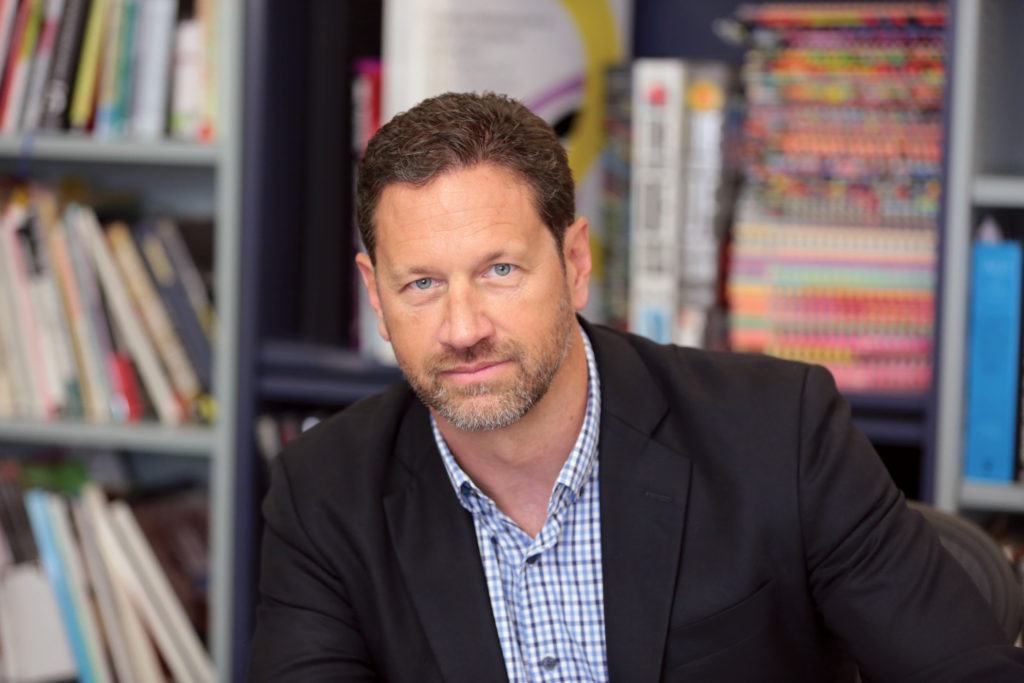
Bio: I had an epiphany at age 19—my first full year studying graphic design—that this was it for me. Designing and teaching design was something I’d be interested in doing for the rest of my life. I consider myself a designer, not an artist. I don’t generally make art on my own. I need a communication problem to solve or a presentation challenge that is directed toward a visual communication goal.

Vital early-career moment: My biggest and best professional experience was working with Eric Groves at his studio which at the time was called Groves Design (renamed as Flying Hippo) in Des Moines. I was his first employee and Eric showed me so much about the business of graphic design and trusted me with a variety of design jobs from logo, poster, publication and t-shirt designs to art directing photoshoots. We even designed a whole magazine from scratch for Home Depot, each of us in charge of designing different sections.
Your influences: Eric Groves, whose studio now has over 20 employees. He was then, and still is, a great boss. Among my biggest graphic design influences on a global scale, Vaughan Oliver is the clear leader. Oliver—who sadly passed away just before the new year—and I actually met between my junior and senior years of college. I found his work inspiring, but also appreciated his humility, humor, and generosity in meeting my class at his studio in London. He also joined us for lunch and a pint at the pub across the street. I’m grateful I didn’t know much about him or his work before I met him (this was pre-internet, y’all) or I would have been way too intimidated to talk to him.
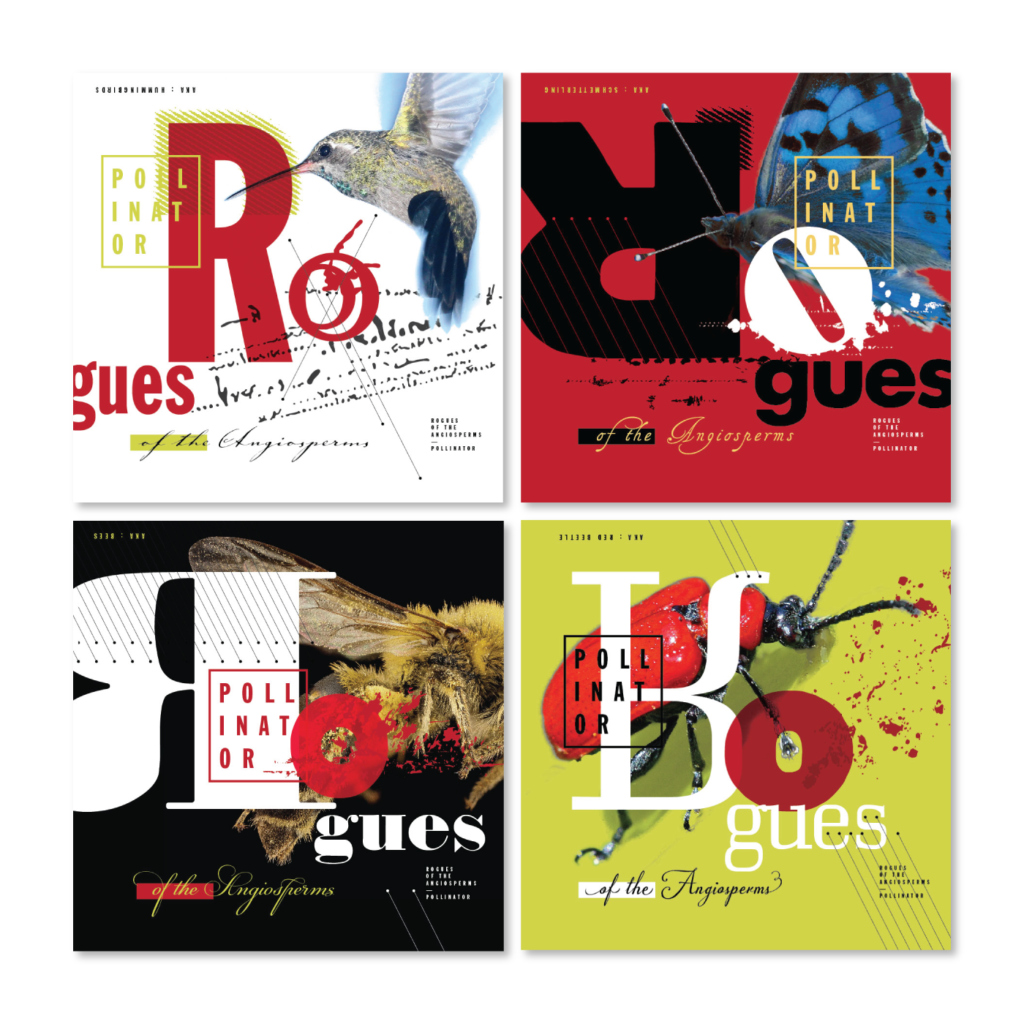
Key thing to know or understand about graphic design: It probably looks like fun and in many ways, it is, but this is a job. As with any profession, designers have varying degrees of skill and training. We work with images, typography and spatial compositions across a broad array of media and with a wide variety of software and materials. On the one hand, everyone can kind ofdo it. So, it’s accessible. Everyone can kind of design like everyone can kind of play baseball. But not everyone has the skill or the training and discipline to do it professionally, on demand, and under the pressure of budgets and deadlines.
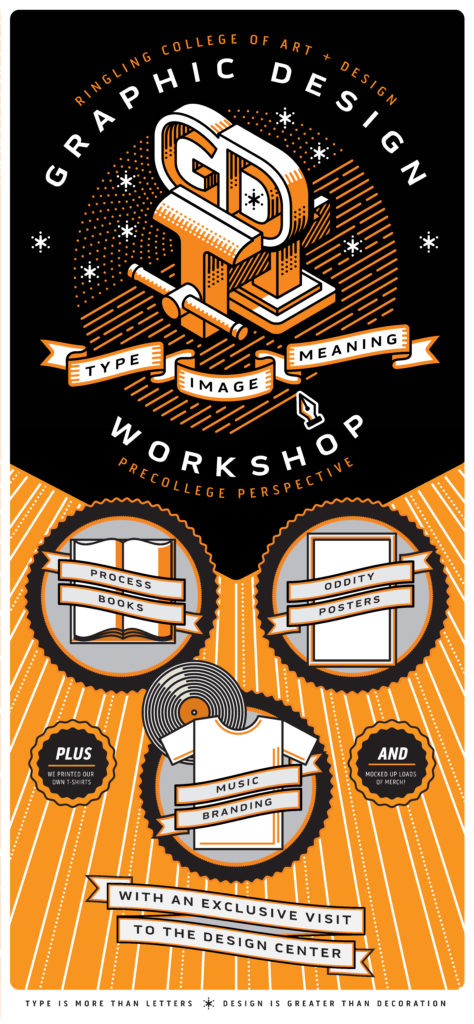
Something surprising about the world of graphic design: The practice of design has conditioned me for things I do on a daily basis that I never would’ve imagined as a design student. And also how the need for design has expanded with the advent of the internet, websites, and mobile apps. But the process of gathering research, sifting it for potential solutions, organizing visual and textual information, and presenting clear ideas in a variety of understandable and engaging visual formats is so useful that at Ringling right now, the department head for Computer Animation, the department head for Motion Design, the department head for Illustration and I all have undergraduate degrees in graphic design or communication design. It’s a great access point for finding a scope of work you enjoy and developing solutions to a vastly diverse range of visual communication opportunities as well as business and social needs.
Anything else? Teaching is a surprisingly tiring but thoroughly enjoyable and invigorating vocation. I think teaching is another thing many people think they know what it involves because we all have seen it done. But I learn something every time I step into the classroom. I enjoy creating the design problem as well as the presentation of the problem to the students. And I’m proud to work with my fellow faculty from whom I’ve gleaned so much.
Scott Gordley
Editorial Art
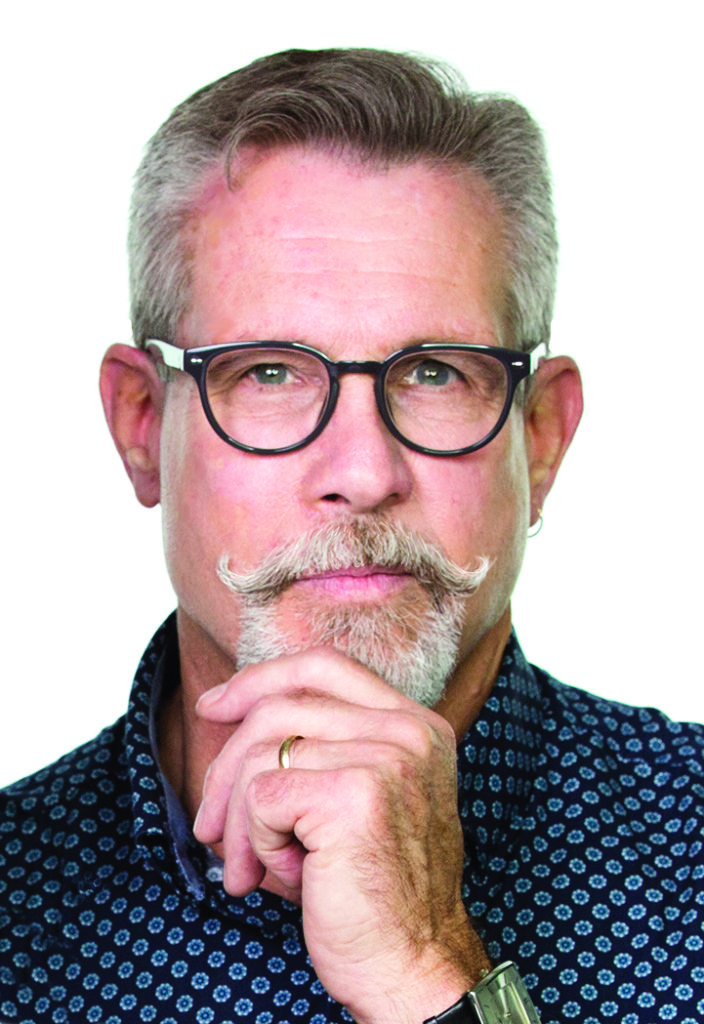
Bio: I graduated from Ringling College of Art and Design and earned an MFA from Tufts University. My career began in New York illustrating for clients including Time, Esquire, Newsday, Playboy,London Times, Viking Penguin, and Hearst Publications, among many other publications and agencies. I am currently the Illustration department head for Ringling College of Art and Design.
Vital early-career moment: Painting James Earl Jones. He was in rehearsal at that time for Driving Miss Daisy on Broadway with Vanessa Redgrave. During our painting session, he recited lines from the play in his booming Darth Vader voice. Between lines, he would regale me with stories of him posing nude for life drawing classes as a young man as well as telling me numerous dirty jokes. When Darth Vader tells you a dirty joke, you laugh!
Your influences: I began seriously making art at around 3 or 4, following my mother’s lead—she did fashion illustration for department stores in Dayton, Ohio, where I grew up. Like many of us who loved art as kids of my generation, we were weaned on Disney, comic books, and Mad magazine. Famed Mad magazine cartoonist Jack Davis was one of my early influences, as was Degas, Rubens, Norman Rockwell, Burt Silverman, N.C. Wyeth and 30 or 40 others.
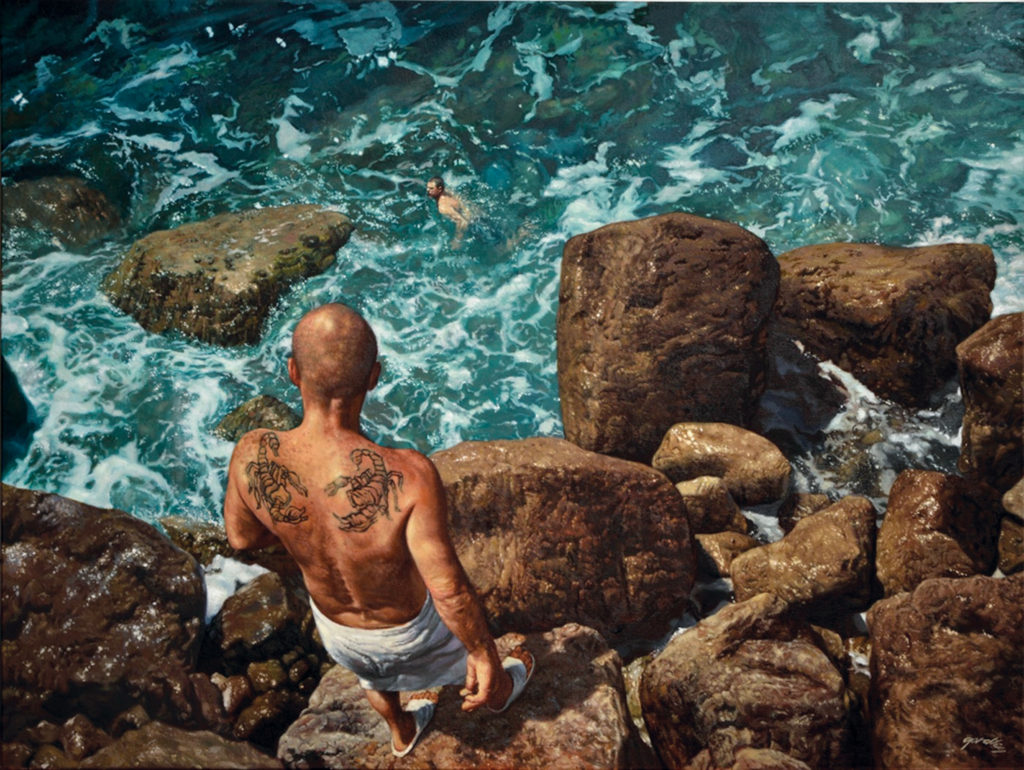
Key thing to know about making editorial art: The days of having the luxury Maxfield Parrish or Norman Rockwell had in taking a month or two to execute a piece are long gone. With all of the social media outlets available creating news by the millisecond, publications—digital or print—have to act fast in presenting to their audience.
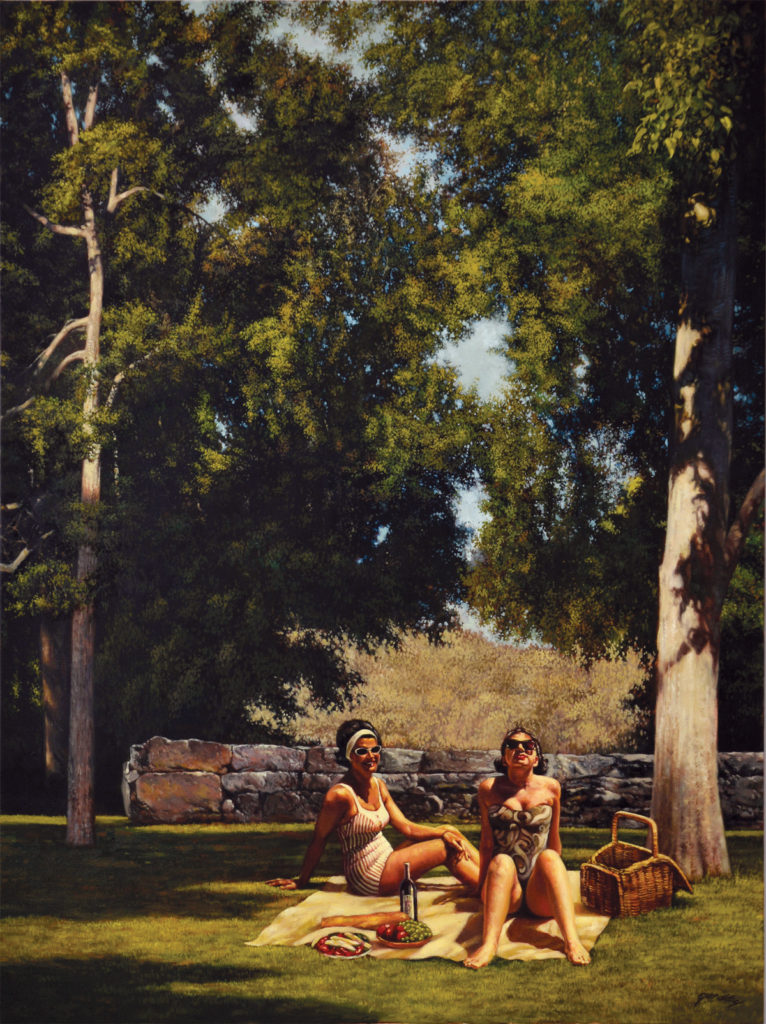
Something surprising about making art: That I’ve been able to get by with it! Imagine art and art-related activity that pays your mortgage! I was always under the impression that one had to work for a living and the word “work” was always a negative word. I always tell my students there is nothing better than to be consumed by something you love so much so that you forget to feed the cats until they put a hole through your canvas trying to get your attention.
Most important thing about making art: Those of us embedded in the arts—for all the challenges residing on the margins of a mainstream agenda—feel inordinately blessed. What a fantastic life. I constantly preach that mission to my students. As educators, especially at Ringling, we’re not selling a vocation—we’re selling a life.
Caleb Prochnow
Concept Art/Kit-Bash
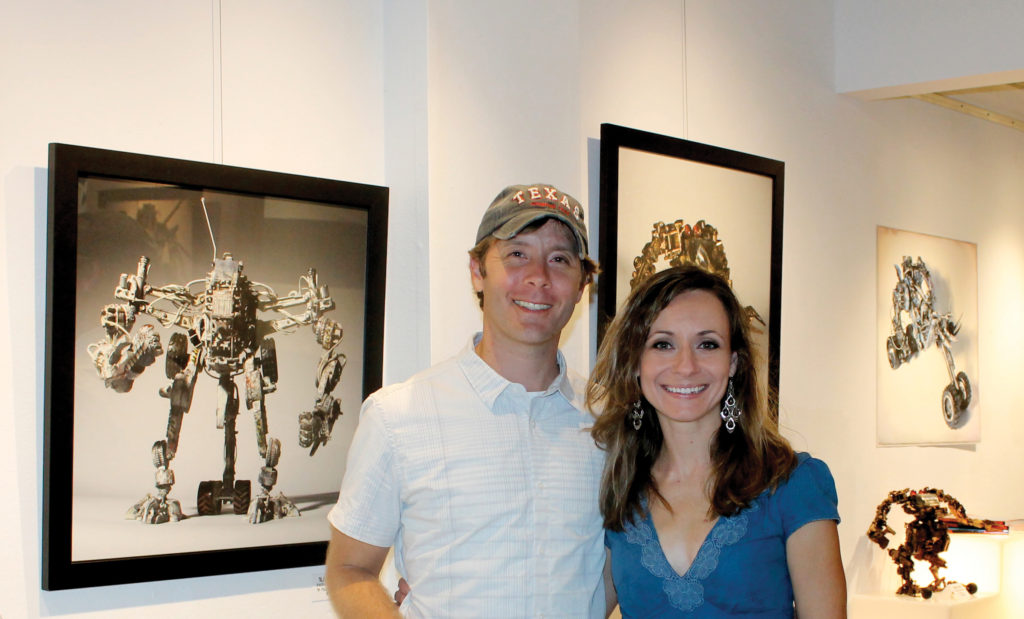
Bio: I have created a lot of different types of art in my career: concept art, advertisements, book covers, calendar illustrations, logos, apparel design, 3-D modeling, sculpture, teaching, painting, and more. My wide-ranging artistic ability has enabled me to work for companies such as Disney, Universal Studios, NASCAR, Ron Jon Surf Shop, Simon & Schuster, Ogilvy & Mather, EA Games and many more.
Vital early-career moment: I was an avid reader in middle and high school, devouring books like Encyclopedia Brown, Hardy Boys and Ender’s Game. Growing up in the 80’s and 90’s, I also saw the creation of creator-owned comics and dreamed of making my mark in that industry.
Your influences: Todd McFarlane, Jim Lee, Rob Liefeld, and Mike Mignola. As I became more interested in art, my influences grew to include artists from the Golden Age of Illustration, Gustaf Tenggren, Arthur Rackham, and Edmund Dulac. The common thread through all of the artists that I looked up to and admired was storytelling.
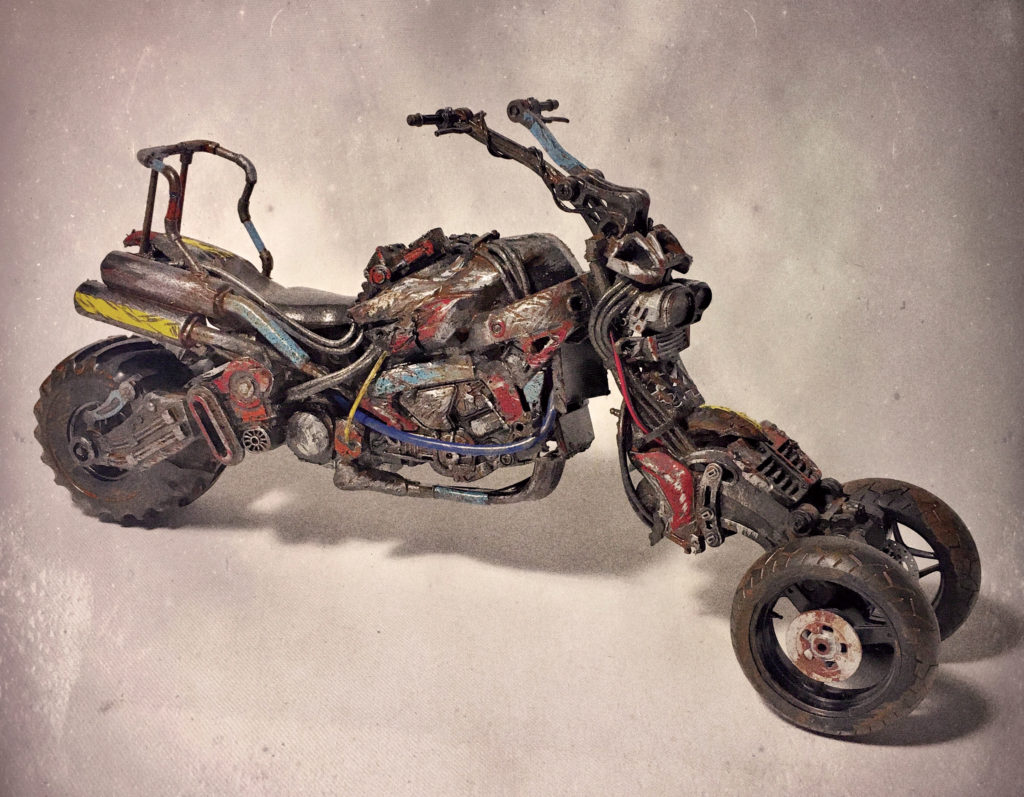
Key thing to know about making concept art: I enjoy creating concept art because I’m visualizing something that doesn’t currently exist. Concept art is the development of a culture, creature, clothing, prop, room, or object that will help move a story forward and bring it to life.
A good definition for kit-bash: It’s an art form of using parts of models, toys, or found objects to help create something new. It’s used in the industry to create concept art and/or prototypes. Examples of Kit-bashing in film can be found in the spaceships of Star Wars: A New Hope and the Batmobile in Batman Begins.
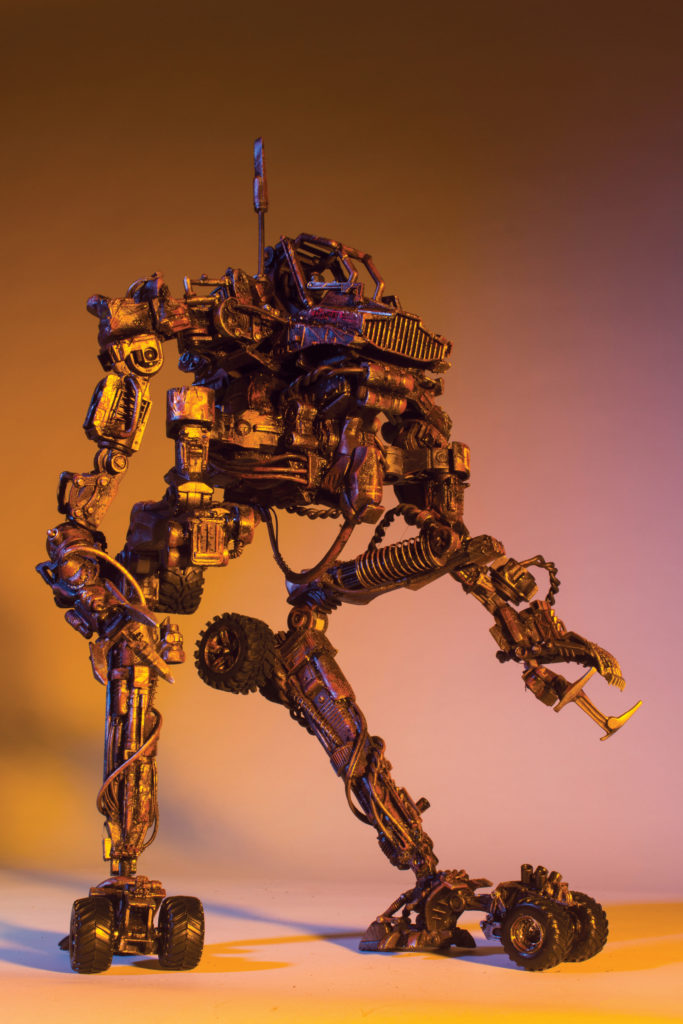
Something surprising about making art: Almost everything that we interact with, wear, or view has been designed or touched by an artist. My students have gone on to careers as car and shoe designers, patterns artist, concept artists for film and video games, theme park designers, children book illustrators, social media influencers, and business owners. I’m constantly surprised by the breadth of their careers as artists.
Most important thing to understand about making art: Create something new every day and surround yourself with people that will give you honest feedback. While it may be difficult to hear that feedback at the moment, honest feedback will help you grow as an artist in the long run.
Anything else? My advice to artists entering the professional arena is to beware of flatterers and be cautious of doing business with friends.
Ed Cheetham
Motion Design
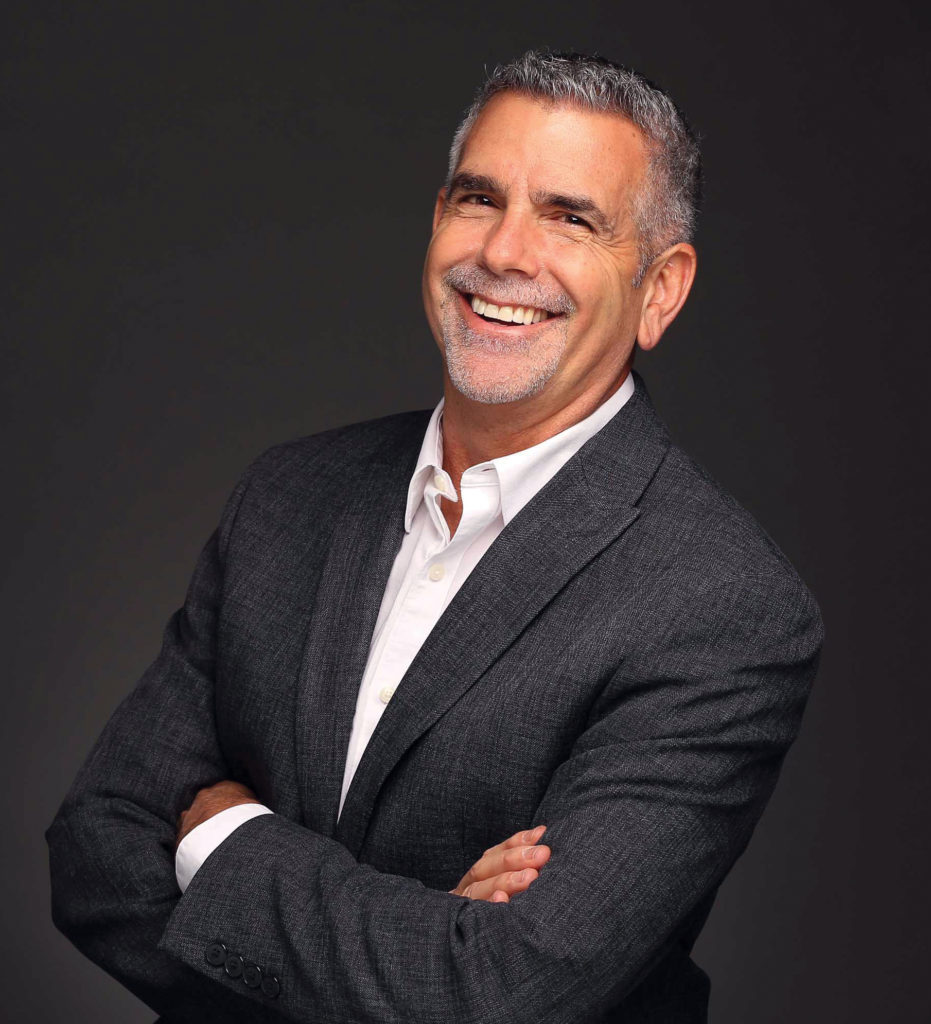
Bio: My love for computer animation started back in 1982, as a graphic designer who wanted to explore motion as a design element. I attended The Ohio State University’s Computer Graphics Research Group where I earned my Master’s in Art Education. I started as an animator at one of the first computer animation studios, Cranston/Csuri Productions. I’ve continued to combine my love of teaching and animation by helping to start the Computer Animation major at Ringling in 1991, and most recently founding the Motion Design major in 2009.
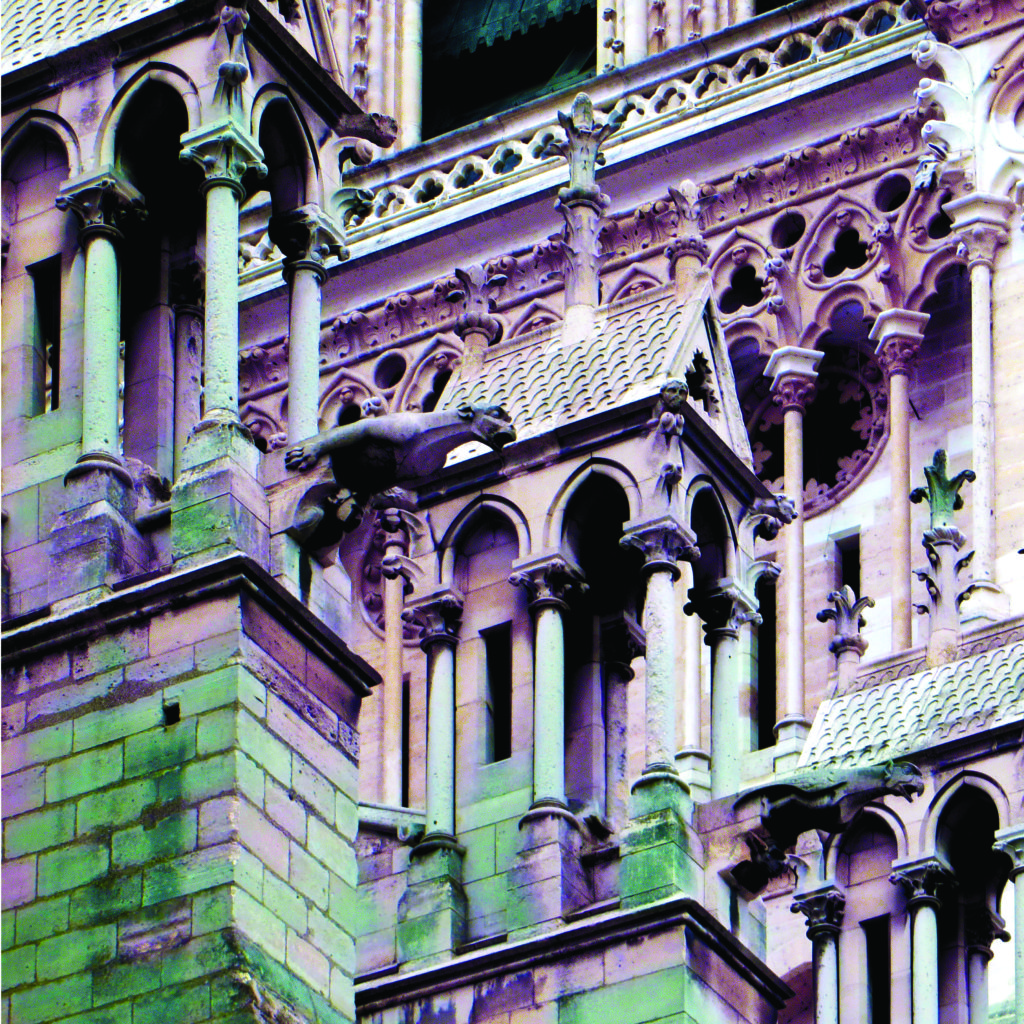
Vital early-career moment: Being a part of the development of the new field of computer graphics. At the beginning, computer graphics was described as a solution without a problem. Everyone was a student, and they were so open with their knowledge and discoveries. It’s similar to the type of sharing community that the current Motion Design industry has embraced, and it’s a philosophy that I try to foster within the Motion Design major.
Your influences: It was such an honor to meet two of my heroes, Frank Thomas and Ollie Johnston (two of the Nine Old Men of classic Disney Animation). I remember being at Ohio State, working late one night on an animation, when visiting artist Frank Thomas walked into the basement computer lab, and asked me to tell him more about this new computer animation technique. In return, he drew for me a Mickey Mouse in my sketchbook. It’s my most prized possession to this day. It was such an inspiration to see this talented man—one of the most respected men in the field of animation—be humble, curious, and wanting to continue to learn.
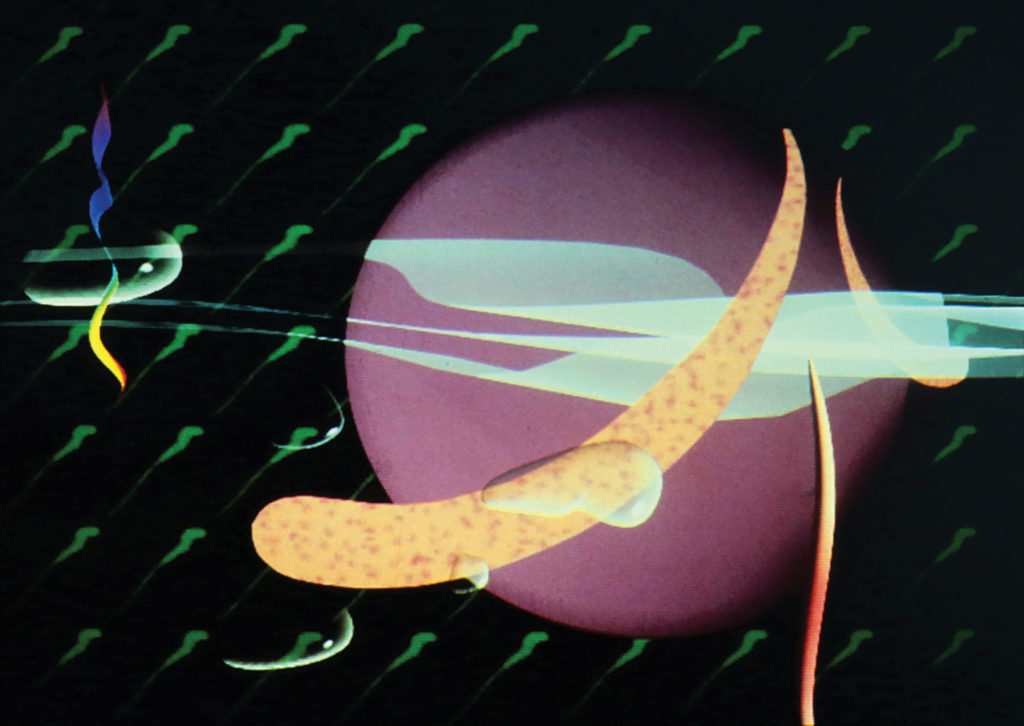
Key thing to know about creating motion design: Motion designers come from a long history of creatives who used film, illustrations, puppetry, and visual effects, all to communicate an idea, message, or story. From the earliest days of cinema, they used media in ways unintended to push the creative envelope, make dancing figures from spinning paper discs, use oil lamps to cast images and shadows on walls, and move paper cut-outs to create an engaging opening title for a movie.
Something surprising about motion design: It’s not a simple, repeatable action. Every motion design project has its own unique creative challenges. For motion designers, it’s not about doing the same thing over again, and try to improve on it. The biggest challenge for us is to constantly create imagery that is new and different. New and different = eye-catching and engaging. Engaging = memorable, and memorable = marketable.
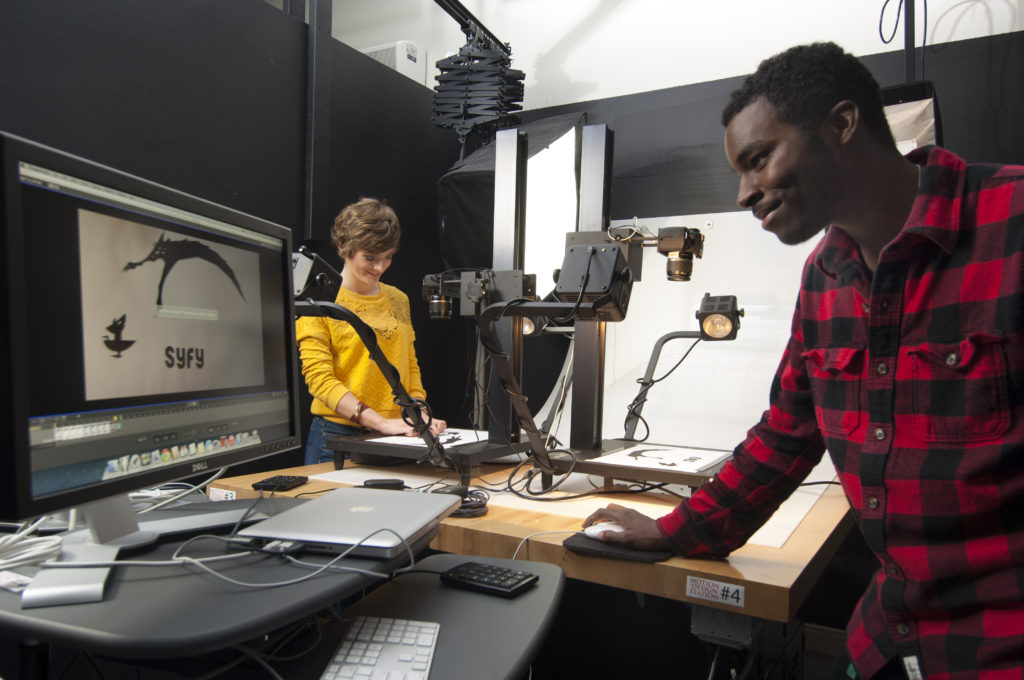
Most important thing about making art: The only thing that really limits you is self-doubt. Accept that there are too many things to know, so accept and embrace the not-knowing.
Kelly Warner
Sound Design
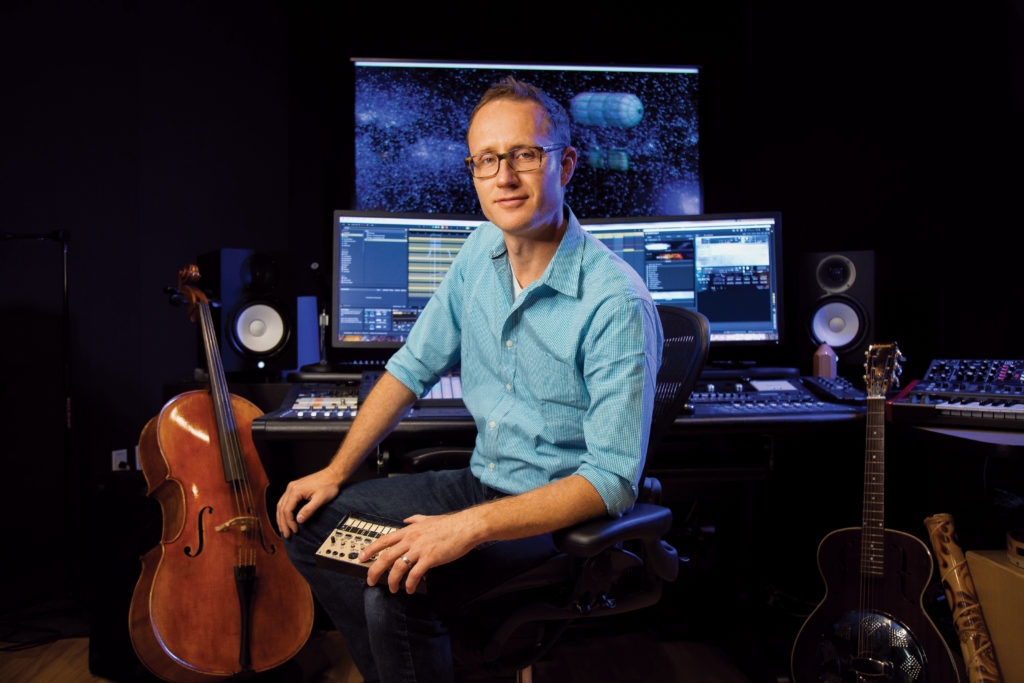
Bio: I help students communicate through sounds of all shapes and sizes as sound designer and engineer for the Motion Design Department at the Ringling College of Art and Design. I also write, sing, and produce original songs as indie pop artist Hotel Eden, and craft custom soundtracks, sound design, and post production for creative ad firms all over the country through my brand, SoundMural.

Vital early-career moment: In a distant past, I was half of a performing hip hop duo. A fan and friend of ours—the founder of a visual media creative firm—asked me if I’d be interested in producing music for an internal piece for a large tech company. What an awesome experience! The way that rhythm, tone, and timbre influenced the mood and message was fascinating, so this one project became a long-term relationship with combining sound and visuals.
Your influences: I was adopted, and all four of my parents are musicians. I was on the road just after birth, living in hotel rooms and touring the country with my mother in a red pickup truck covered with [actual] love bugs. So, for me, music started early. Later, my adopted father would spin Beatles vinyl on a hi-fi system, often playing a variety of instruments in the evenings. He still does!

Key thing to know or understand about sound design: I’m often asked what the best software is for creating sound design or music. While I’m a huge fan of Ableton Live for its experimental-friendly workflow, my response is essentially, “Be extremely proficient with a few simple tools you personally love—but stay open.”
Something surprising about sound design: Every day, I feel more strongly that the only real difference between the sound and visual arts is the physical sense we use to perceive them. Sounds in the stereo spectrum demand their own space, forming relationships; the same with elements in a visual composition. Film’s visible grain and tape’s audible noise. Visual blur versus reverberation. Contrast, tone, timing; warmth and coolness. So many parallels exist that I’ll often look to a visual model to solve a sonic challenge. If these sounds were objects in a visual arrangement, what would they look like, and how would they get along? What would I change? There’s always a parallel in the sonic world.

Most important thing about making art: On some level, art is always storytelling. Every technique or tool is simply a means to that end. So, strive to tell a great story.
Don Brandes
Design, Illustration, Media Variety

Bio: I decided to be an artist sometime around the 2nd grade. Since then, I have spent a lot of time drawing. I received my BFA from the University of Missouri in Columbia and his MA from Syracuse University in New York. After college, Hallmark Cards Inc. hired me as an illustrator of greeting cards. During that time, I started teaching a variety of illustration techniques at Kansas City Art Institute, freelancing, and doing gallery work. Ringling College asked me to teach for them in 1998, and my wife Katy and I have never looked back.
Vital early-career moment: I had some really good teachers in college but my education as an illustrator started at Hallmark. At that time, it was the largest creative studio in the world. For 15 years, I learned something new every day!
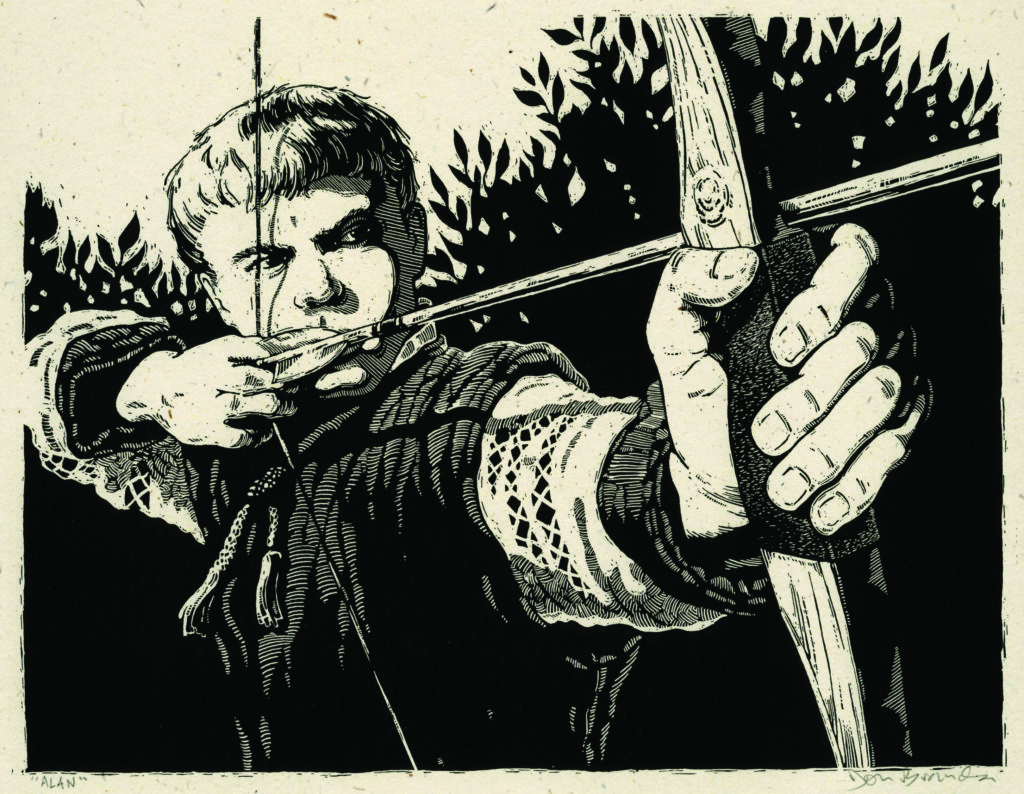
Your influences: At Syracuse, I took a History of Illustration course and eventually taught that class here at Ringling. 95% of my influences and heroes come from illustrators past and present. It’s an honest profession. Illustrators are hired by art directors to bring their talents to a job. There’s nothing pretentious about this career—I feel good about that.
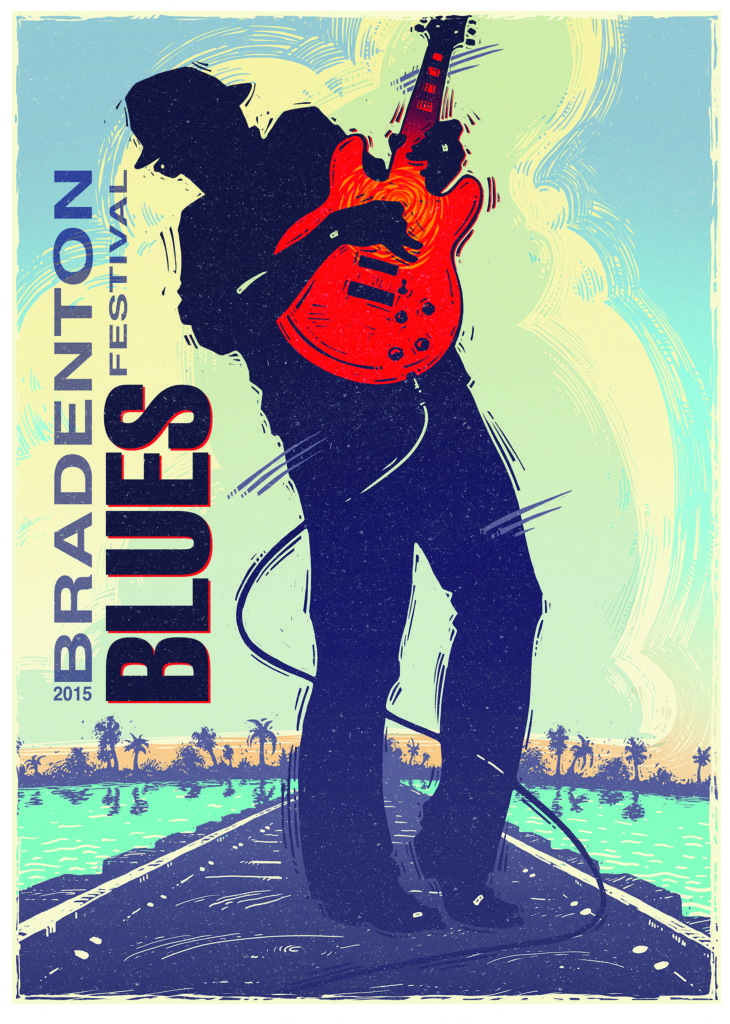
Something surprising about making art: It’s surprising to me how the students at Ringling College continue to get better and better. That keeps me from ever getting bored with teaching. I have to work hard to keep up with them!
Most important thing to understand about making art: For me, it’s simple—all art is based in drawing. With any painting I do, if it’s based on a good drawing, it’s going to be a good final product. Good drawing skills are the key to success.
Joe Thiel
Editorial art/Graphic Illustration
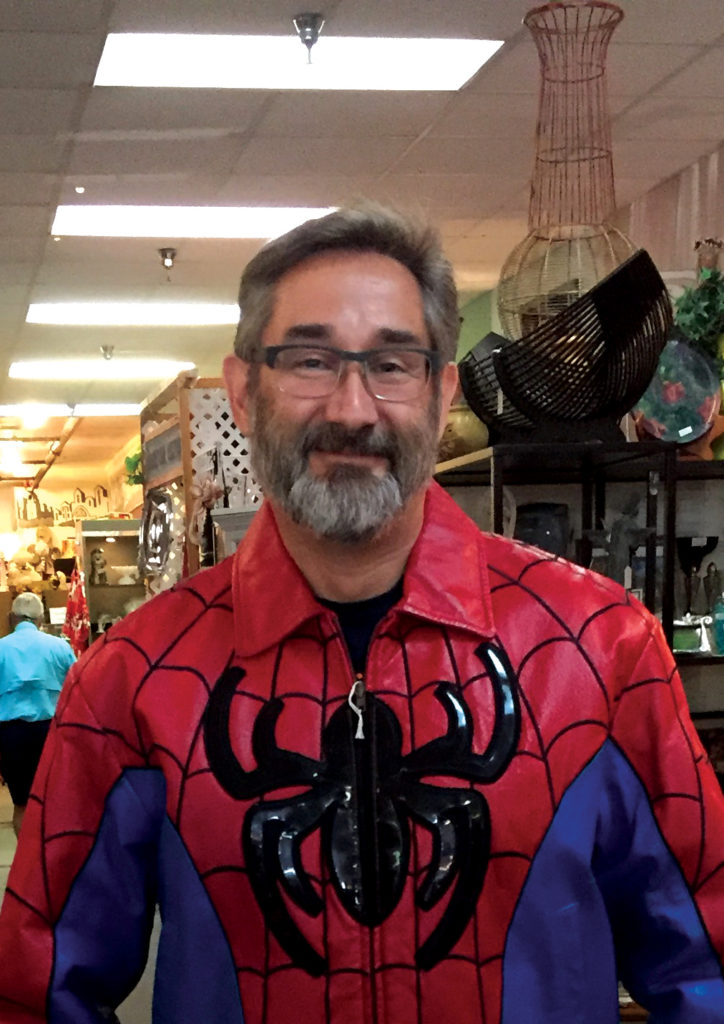
Bio: I was born across the river from the Great White North in the savage border town of Buffalo, New York. Here, among other things, I bussed tables, washed dishes, cut up small- and medium-sized animals for the Mafia, and eventually earned a BFA in Graphic Design as well as the first MFA in Illustration offered by the State University of New York. After graduating, I moved south to escape the frozen tundra and freelanced for The Washington Post, The New York Times, The Washington Times, The Baltimore Sun, The Detroit News, The Chronicle of Higher Education, Johns Hopkins University, The Federal Government of the United States, The US Army, The American Psychiatrist Association, and more.
Vital early-career moment: I was “lucky” enough to have had pneumonia badly enough a couple times as a kid that I was confined to an oxygen tent. All I could do was copy pictures from the comic books my cousin had given me—that’s what first got me interested in drawing. What clinched it was that in 6th grade I had the author Dan Simmons as my teacher, and he’d tell us stories while he was drawing them at the same time.
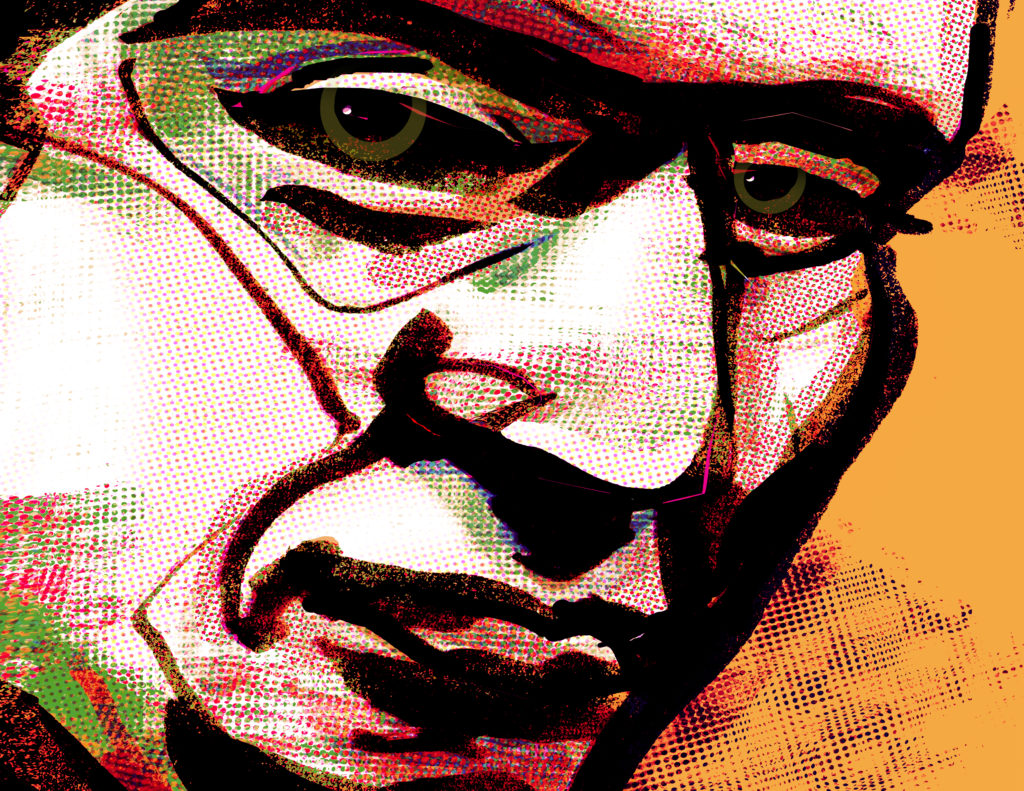
Your influences: Comic books, movies, trashy pulp fiction, painting and prints of all -isms and eras, seeing great art in great museums, and above all, Alan E. Cober, one of America’s greatest illustrators who was my graduate school art teacher and saved my life twice—first, by teaching me what illustration was and could be, and second, by helping get me my job at Ringling College, where I’ve worked for the past 28 years.
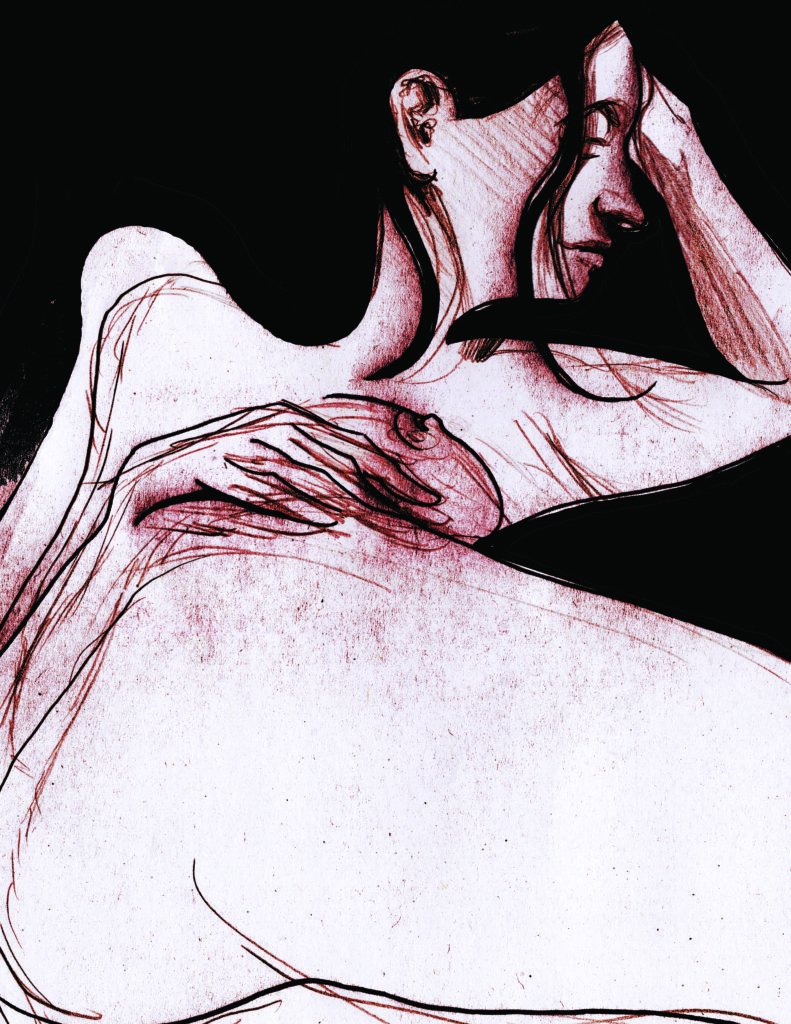
Key thing to know about making art: Illustration is art, period, end of story. Think about it—how many people are familiar with Norman Rockwell, N. C. Wyeth, and Maxfield Parrish, compared with, say, de Chirico? It deserves respect. It solves a client’s problem or need while at the same time needing to look cool and hopefully be memorable, while probably being done on a quick deadline as well.
Something surprising about making art: When done well, art is fascinating to us because it’s a continuum of people borrowing/stealing from each other to continually create something new.
Most important thing about making art: Instead of depending on my years of “experience,” my recent figure work has been about letting the muse take me where it wants to go. Sometimes the results are cool, sometimes it’s horrific, but whatever happens, happens, and that’s what makes it fun.
Thomas Casmer
Children’s Books, Mechanical
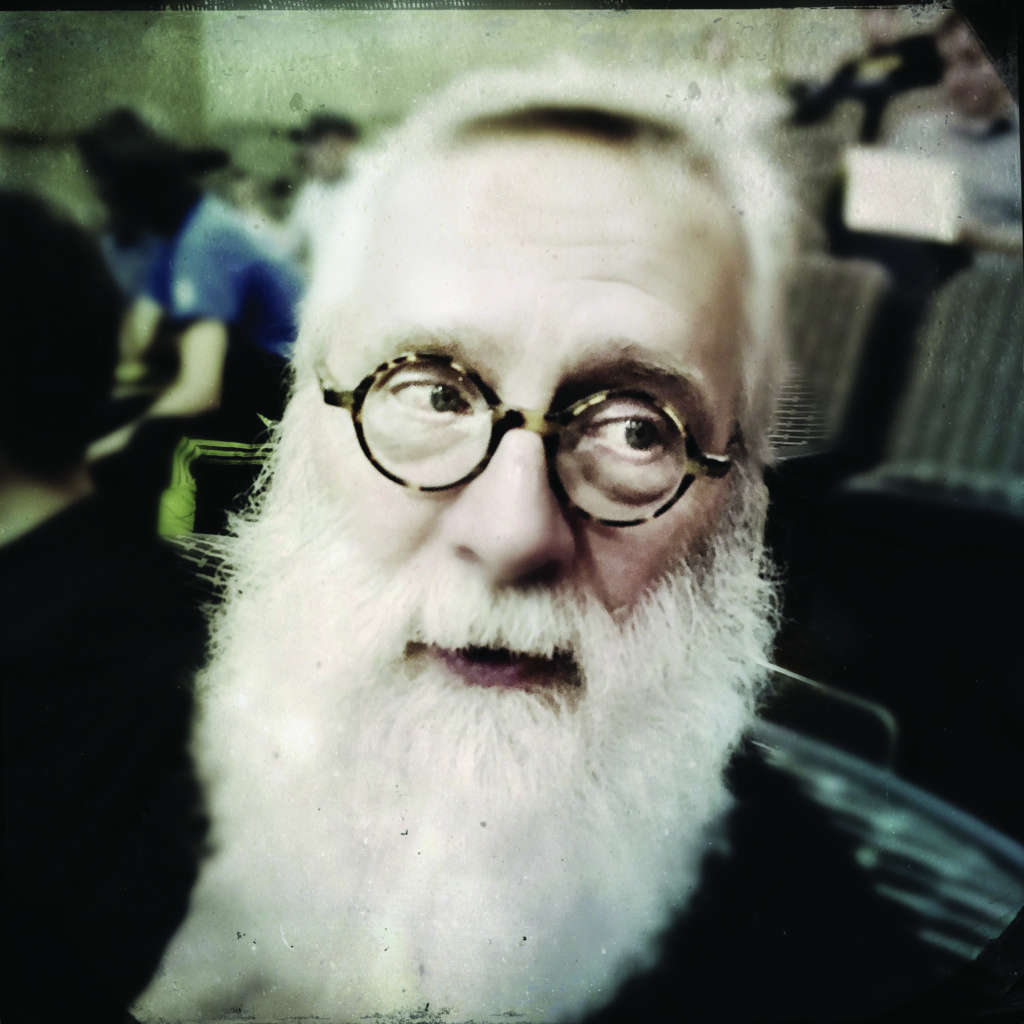
Bio: I’d call my career “diverse.” Although I’ve been teaching art for almost forty years, what I’ve taught reflects that diversity. Graphic Design, Illustration, Children’s Books, Figure Drawing, Typography. The places that I’ve worked as an artist are also diverse—small design groups, in-house illustration studios, corporate art departments and eventually freelancing in my own studio. I’m now enjoying how all of these experiences have informed the current direction of my art. I started my career as a fine artist and musician, then I went back to school to study Illustration and Graphic Design, and now I find myself focusing once again on fine art drawing, painting, and sculpting.
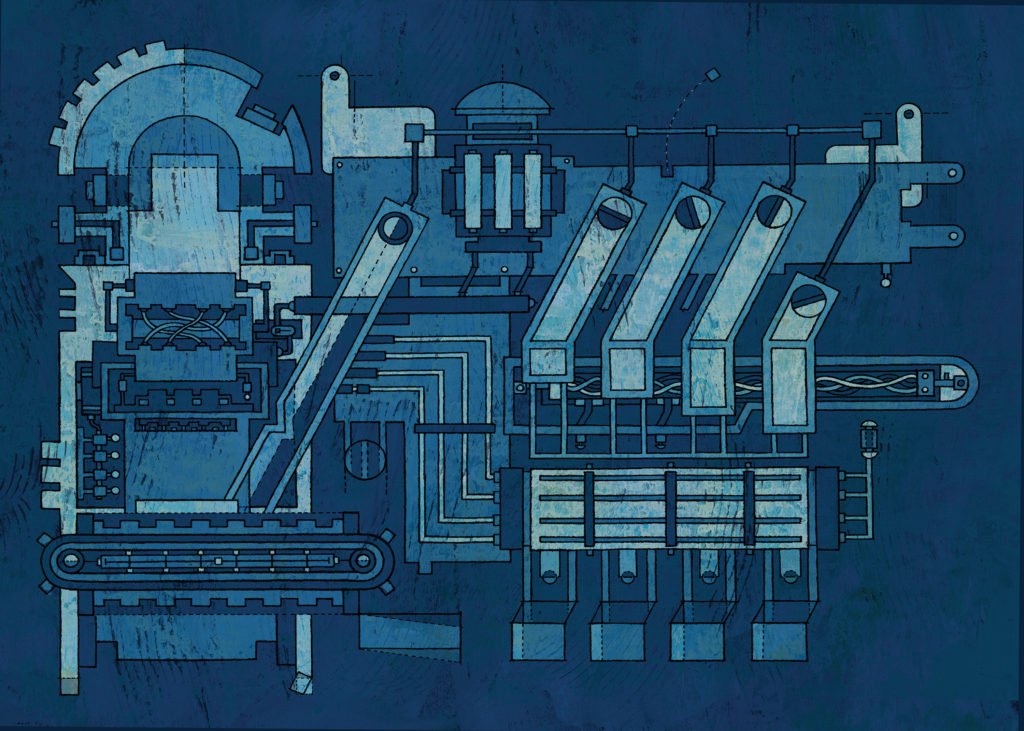
Vital early-career moment: An early experience that I had the good fortune of participating in was a trip to NYC with a group of students and the Department Head of the Fine Art Program at Hamline University at the time, Paul Smith, probably in 1971 or ‘72. On that trip, we visited the studios of artists Duane Hanson and Louise Nevelson. I find that aspects of my current work echo Nevelson. Meeting the artists and experiencing the art scene in New York were inspirational moments.
Your influences: My wife, Mary GrandPré. I knew of her work as an illustrator long before she and I ever met. Brilliant. My dad, for sure. He could build a house and fix or repair anything. I think he instilled the thought, besides “measure twice, cut once”, that if you screw up on something you can fix it and still learn a great deal in the process.
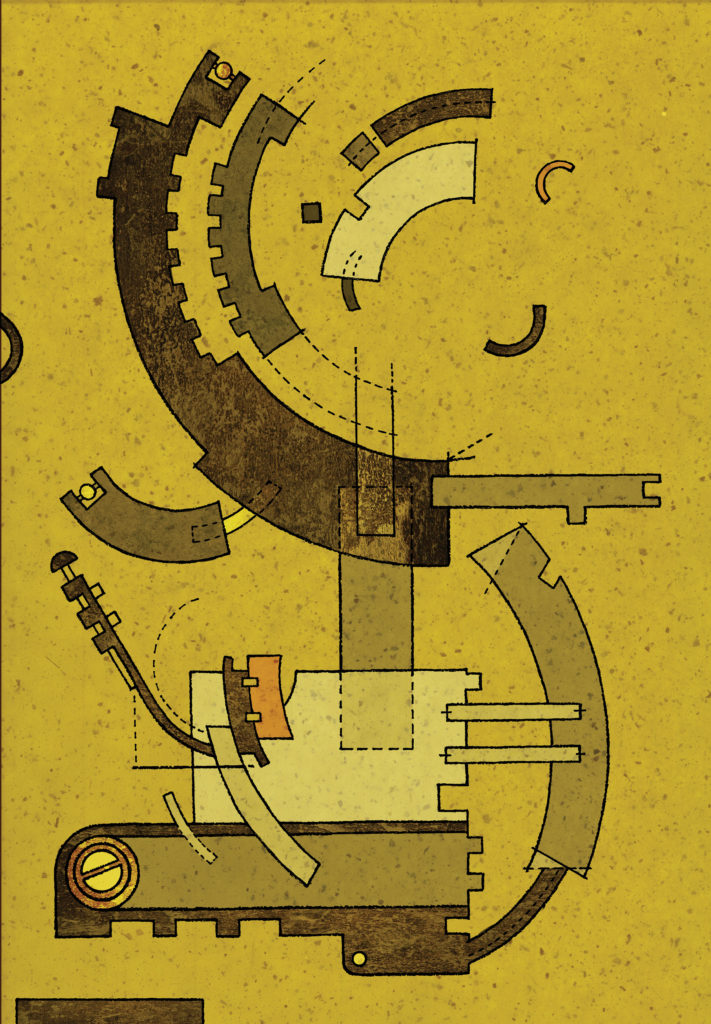
Key thing to know about making mechanical art: While it looks planned, for me it’s a very spontaneous process, especially in the drawing and painting of the images. Once I start, each separate element in the abstract construction is a reaction to what came before and some anticipation of what might come next. If I take that image and want to make a sculpt of it, it’s at that point that the initial drawing may serve as a blueprint or at least a visual guide for the 3D version. The materials I’m using right now are those I’m most comfortable using; wood for the sculptures, and pen, ink, and pixels for the prints. I enjoy the process of starting with a traditional medium of pen and ink, and then painting digitally; outputting a print and then building cradled panels out of birch plywood and 1x2s; and then mounting the print on the panel. From traditional to digital back to traditional. Tradigital.
Something surprising about the world of art: That it’s filled with such talent and people who are willing to share and give of their time and experience. I’m grateful for being allowed to be a part of it. I thrive in its diversity.
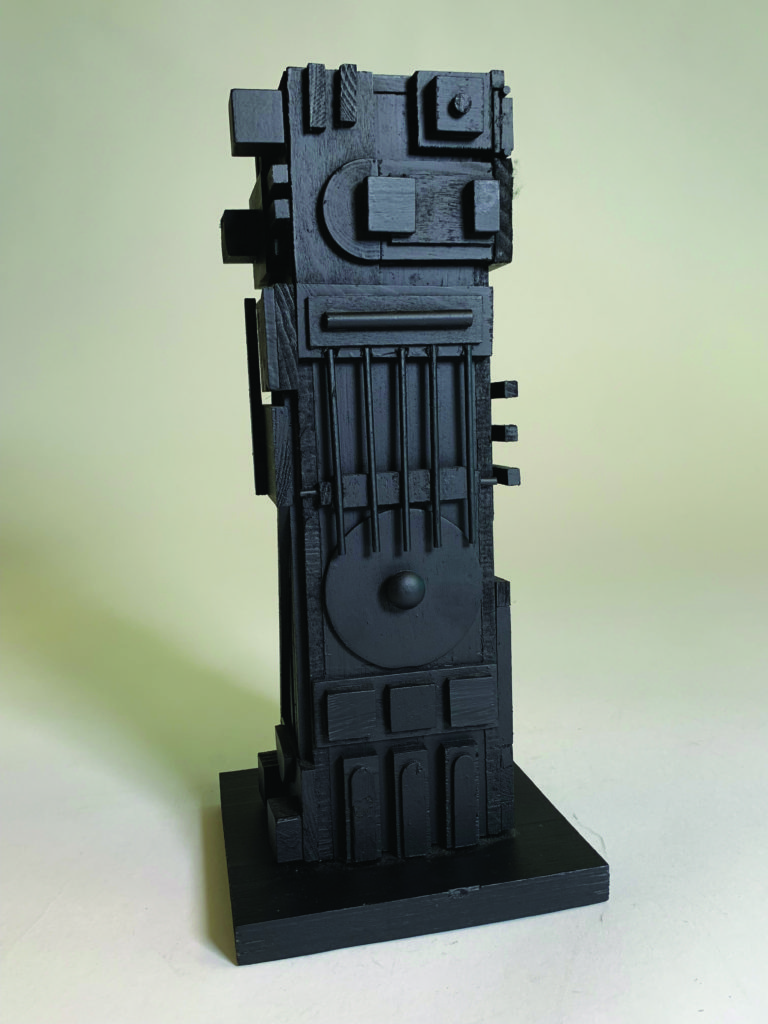
Anything else? I’ve learned that art is hard but very rewarding work. The years spent studying in school and filling your head with new ideas and the various “tools” for your particular toolbox are invaluable. Then there are the years of applying your trade—in my case as an artist and educator. Because of that, I have a stronger sense of what my voice/outlook—whatever you want to call it—is.



You must be logged in to post a comment Login